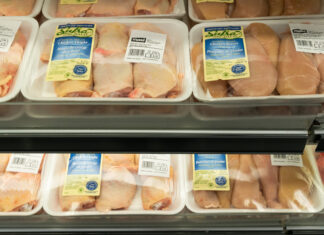Inflation in Germany has been higher almost every month than in the previous month for more than a year. That could change soon, as some of the factors driving global inflation have already weakened or even reversed.
The inflation rate in Germany was 7.9 percent in May. It has thus increased significantly since the beginning of 2021. Back in January it was 1.0 percent. In the Corona year 2020, prices even fell in most months. Germany is not alone in this development. In France, the inflation rate rose from 0.6 to 4.5 percent in the same period, in the USA it rose from 1.5 to 8.3 percent and in Great Britain from 0.7 to 9.0 percent.
While many of the reasons for this remain valid – such as difficulties in supplying products from China or high energy prices – there are now early signs that global inflation may have peaked. Economists base this on three indicators.
One of the harbingers of the global supply crisis was the lack of semiconductors and computer chips at the beginning of last year. While the global economy recovered from Corona and more and more industries demanded the two product groups, the mostly Asian manufacturers such as Samsung and TSMC were not able to ramp up production again as quickly as it would have been necessary. The result: German car manufacturers had their plants idle for weeks because of a lack of deliveries, and other sectors were also suffering. The price for semiconductors rose by almost 50 percent at times, and delivery times increased.
Semiconductors are now cheaper again. The Bellwether Index, which is used to determine prices in the industry, has fallen by a total of 14 percent since last September. At the end of May it was at its lowest level in twelve months. This is also due to the fact that many tech companies have reduced their orders. Samsung, for example, wants to produce 30 million fewer smartphones than in the previous year, and Apple has also reduced its production. Conversely, this means that semiconductors will become cheaper again for other industries. However, there is still a lack of availability. The waiting times for orders are still long.
The Corona crisis put international logistics in chaos mode. Where containers and goods were otherwise shipped across the oceans like clockwork, deliveries from countries severely affected by Corona suddenly stopped, while others wanted to deliver more goods again. In addition, there were disruptions such as the closure of the Suez Canal and of important commercial ports in China, which continue to this day. Accordingly, containers and ships became a rare commodity that caused the cost of transport by sea to rise enormously.
The Shipping Index from the British analysis company Drewry measures this using the average freight rate of a fictitious container on the most important trade routes in the world. If the transport cost US$ 1,700 before the pandemic began, the price rose by 511 percent to US$ 10,400 by September 2021. From there, the freight rates have now fallen significantly, especially from March onwards. This also has something to do with the Ukraine war, because the sanctions against Russia are now freeing up containers and ships that were previously needed for trading with the aggressor. Accordingly, the Shipping Index even fell to 7,600 US dollars in May, its lowest level since last June.
Freight rates also play an important role in final prices. The United Nations estimates that global inflation rose 1.5 percent only because of high transportation costs. After all, 90 percent of all goods worldwide are transported by sea.
Food is one of the goods groups in the world that has risen the most after energy. In Germany, this mainly affects cooking oils, meat with the exception of poultry, eggs, potatoes, butter and pasta. There is a grain shortage in many countries around the world. In North Africa and the Middle East in particular, this has reached threatening proportions.
There are many reasons for the rise in food prices. Russia and the Ukraine, for example, are no longer exporting wheat and cooking oils, and climate catastrophes have destroyed or withered many harvests worldwide over the past year. But an important point is also the sharp rise in prices for fertilizers. Because these are produced from natural gas using the Haber-Bosch process and natural gas now costs three times as much as it did a year ago, the price of fertilizer has also risen significantly. The North America Fertilizer Index, which measures prices for the US but is also considered a global indicator, rose from $338.40 per tonne in January 2020 to $1,300 in March following the outbreak of the Ukraine war – up 284 percent.
But since then it’s been going down again. At the end of May, the index was still at 968.10 US dollars, 26 percent lower than in March. Although this is still significantly higher than before Corona, it makes fertilizers a little more affordable for farmers around the world. Ergo, the harvests could be better and therefore the prices at least not rise as much as before.
However, the three indicators semiconductors, freight rates and fertilizers alone will only slow down inflation, not stop it. Energy prices, for example, are still far too high for this, especially since they have recently risen significantly again. In addition, lower prices for the transport of goods are of little use if these goods cannot be manufactured or loaded on ships due to corona outbreaks in China. Wheat and cooking oil deliveries from Russia and Ukraine, which are otherwise important worldwide, will also fail to materialize or be greatly reduced as long as the war in Eastern Europe rages on. And so far there are no signs of a peace agreement.
Follow the author on Facebook
Follow the author on Twitter
















































